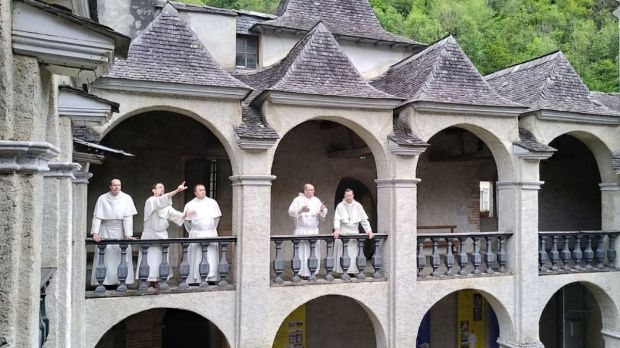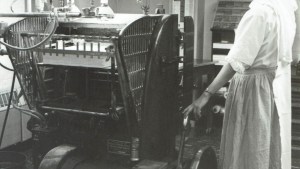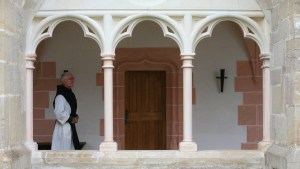Sarrance, in southwestern France, is located about 50 miles west of Lourdes and less than half that distance from the border with Spain. At an altitude of 300 meters, surrounded by Pyrenean peaks, Sarrance is the narrowest place in the Aspe valley, irrigated by the Gave d’Aspe river.
In the center of the village stands the abbey dedicated to Our Lady. Built to a comfortable human scale, with its parquet floors and its two-story cloister with wooden balustrades, “You’d think you were in the inn of the Three Musketeers,” exclaimed the Norbertinecanons regular (also known as Premonstratensians) when they visited the abbey for the first time.
“The Virgin Mary chose this place,” says Fr. Paul-Emmanuel, future prior of the community.
This has itself been a place of pilgrimage since the 12th century, recognized as such by Pope Innocent II in 1140; it’s the oldest such destination in the Atlantic Pyrenees. Here, the Blessed Virgin watches over pilgrims and people who have come to rest near her. “We fly to Thy protection, O Holy Mother of God. Do not despise our petitions in our necessities,” they pray each evening, kneeling by the niche behind the altar.
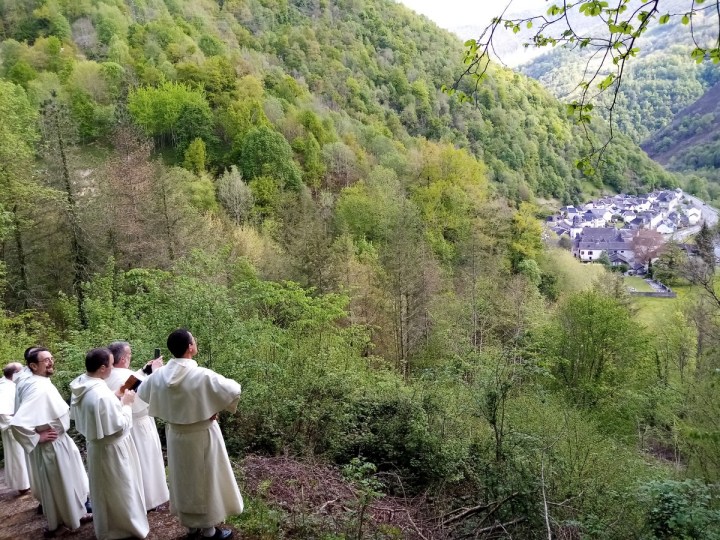
At the request of the bishop of Bayonne, Marc Aillet, the canons have been charged with revitalizing the pilgrimages. Welcoming pilgrims is a tradition for the canons of the Norbertine order. As at the abbey of Saint Foy de Conques, about 270 miles northwest of the Aspe valley, where the pilgrims of the via Podiensis (one of the routes to Santiago of Compostela) have been stopping for 30 years, pilgrims of Compostela also stop in Sarrance.
This last stage before the Spanish border allows those who want to avoid the very busy road of Le Puy to take the Via Tolosana, coming from Arles. Through their prayer open to all – the liturgy of the hours and the Eucharist – the canons ensure a spiritual presence. They also offer spiritual guidance and a blessing before setting out on the journey. The 17th-century hostelry, listed as a historical monument, can accommodate 30 people but requires major restoration work.
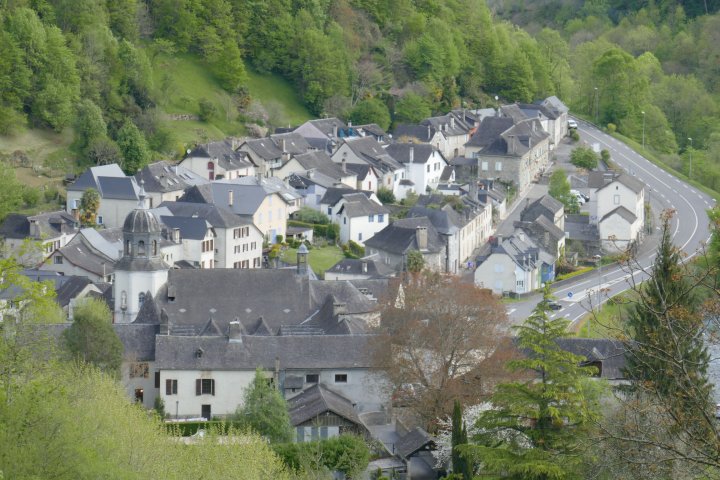
The abbey of Sarrance doesn’t limit its welcome to pilgrims to Santiago of Compostela. Fr. Dominique-Marie, the future rector of the shrine, wishes, with the canons, to make it a spiritual center for the Aspe valley: retreats for individuals and couples preached by the canons, a place to listen, a place to receive the sacrament of reconciliation … The ideas are flowing for these priests who are enthusiastic about this beautiful adventure.
“We’re being offered the opportunity to do something beautiful and we want to take it up seriously,” says Fr. Paul-Emmanuel. “We see it as a sign from Heaven: God is always there and we respond to his call.”
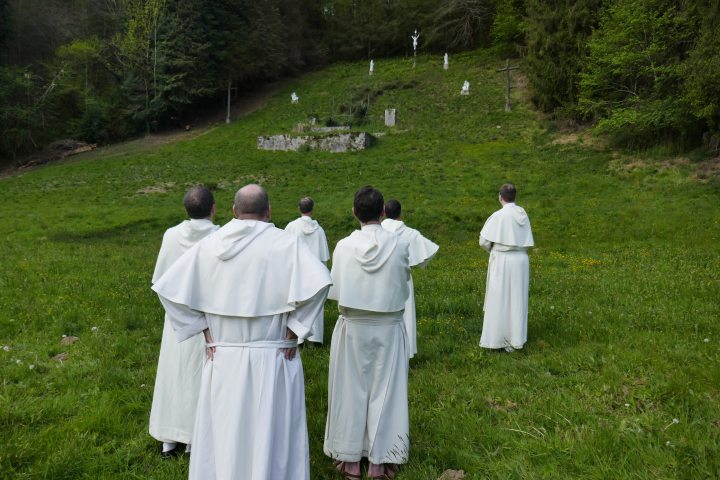
In fact, the presence of the Norbertines at the abbey of Sarrance is part of a continuity. Chased out during the Revolution, they returned in 2011, in the person of Fr. Pierre, succeeding the priests of Betharram. Fr. Pierre, ordained a priest for the diocese of Bayonne 56 years ago, was nevertheless called to “a life of prayer in community and in the midst of the world.”
A novice at the abbey of Mondaye, he has come to Sarrance six or seven times a year. Fr. Pierre acknowledges having been the instrument of the grafting of the Norbertine order into the Pyrenees. “The Norbertine sap taken from the abbey of Mondaye has taken root in me,” the octogenarian priest admits. His prayer – together with that of the parishioners and hospitaliers – to be joined by other Norbertines was finally answered. “It’s a joy to pass on my shepherd’s crook to younger brothers,” he says with a smile.
Through the creation of the Association Saint Norbert en Aspe, Fr. Pierre was able to buy the monastery – except for the church, which was the property of the commune – and to welcome pilgrims and people wishing to recover from their difficulties.
Surrounded by retired or resting priests, he assumed the responsibility of parish priest of the canton of Accous, a responsibility that will henceforth fall to Fr. Renaud and Fr. Julien. The former will be the parish priest. He has been a seasoned priest for 50 villages in Normandy, around the abbey of Mondaye. “It was time for a change of mission,” he says. “We are going to be like pioneers, where the Norbertine presence has been present for centuries, despite interruptions.”
The parish is dedicated to St. Norbert, founder of the Order. His statue stands in front of the gilded choir of the Baroque church, along with that of St. Augustine, whose rule the Norbertines follow. Fr. Julien, the youngest of the four canons, is to be its vicar. During the visits to the town that were necessary for discernment, he saw in the smiles of the inhabitants and parishioners of Sarrance “an interior light.” Their welcome is indeed very warm and enthusiastic.
“In this arid place, one discovers Sarrance at the turn of a road, like a welcome gift from the Virgin Mary, and one comes to draw, at the beautiful fountain with a basin in the village, a human and spiritual refreshment,” promises Fr. Renaud. Our Lady of Sarrance welcomes unconditionally.
